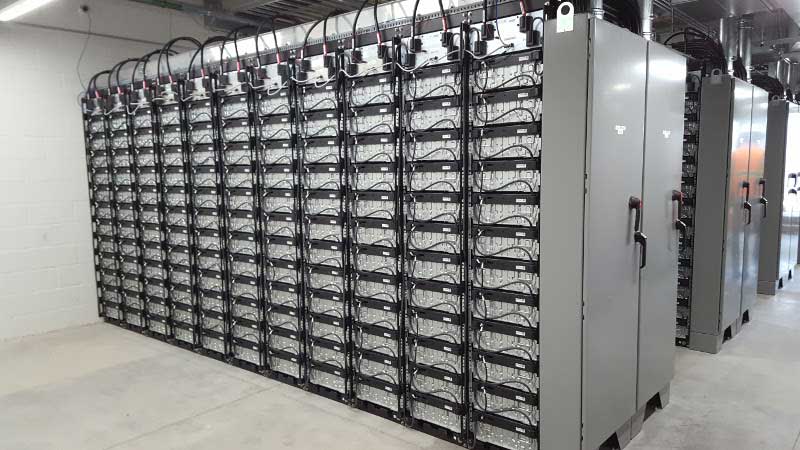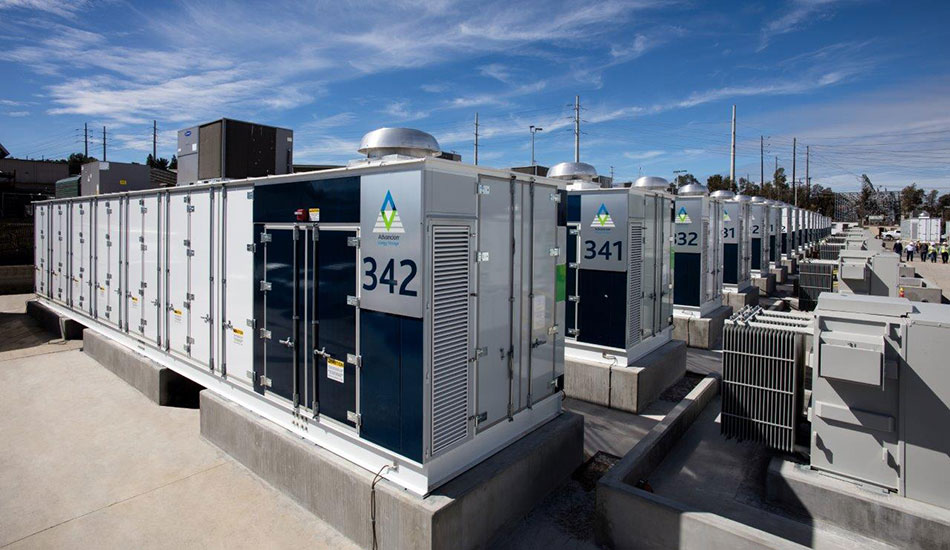The deployment of energy storage has grown significantly over the past few years and will accelerate quickly in the years ahead as the technologies become an essential part of the clean energy transition. Market analysts WoodMackenzie forecast exponential growth in the sector, with global deployment shooting from the current low-double-digit gigawatt-hour level to well over a 150 gigawatt-hour market by 2024. The use cases for storage are also increasing, and residential, commercial and utility installations will all see a tremendous uptick in installations.
The writing is on the wall: smart energy storage will soon be a fundamental grid asset, business sustainability asset, and consumer appliance in many regions of the world.
This exponential proliferation of storage comes with an important caveat: comprehensive, independent testing must also be deployed in parallel during this rapid growth to ensure the quality, reliability and durability of the fielded systems. Storage is a long-term asset and must be treated as such. Deployment without predictable, bankable and safe operation and performance benefits no one—neither the asset owner nor the end-user.
To meet this mission-critical need for comprehensive testing data to support battery and storage system life estimates, PVEL established its Energy Storage Product Qualification Program (PQP) in 2017. Like our flagship solar PV module and inverter PQPs, the storage program provides independent, consistent reliability and performance data to support implementation of an effective supplier management process. It also offers an unbiased appraisal of battery cell and system manufacturers’ product quality and durability. Our strong expertise in inverter testing also transfers well to the power electronics architectures included in energy storage systems.

The storage PQP features two primary elements: cell-level testing, which uses a matrix of 40 cyclic and calendar aging tests to qualify how the cells degrade; and system-level verification, which employs a matrix of 18 tests to better understand how the system maintains and operates the cells within the parameters described, so that we can better model and predict service life. The program includes tests that align with the National Renewable Energy Laboratory’s degradation model as well as testing matrices developed in the automotive industry to better understand cell and system life. Each of the individual tests furnish empirical data to help tune the model so that it’s more accurate and applicable to the specific use case application.
Unlike other labs that offer only cell-level testing, our experienced team believes it’s essential to test at both the cell and system levels and to evolve the program to meet the needs of developers, financiers and asset owners. It’s not just our opinion that such soup-to-nuts testing is critical: the shared pain points, concerns and other feedback looping from our partners in these downstream sectors have driven our systems-level approach. At the end of the day, it’s energy storage systems that are installed in the field, and a more thorough understanding of how the components plus the whole system perform leads to more predictable and accurate economic analysis.
Our customers and partners want an empirical methodology that starts with a factory witness that randomly selects commercially available samples at the battery cell manufacturing facilities. These samples undergo cell and system testing protocols to ascertain lithium cell degradation mechanisms, product compatibility (or mismatch), inverter-battery interactions, operational behavior, and other factors that impact lifetime and performance. For example, partner feedback prompted us to extend our field durability testing to 24 months, with multiple redundant tests as well as monthly capacity tests and reporting.
What does the PQP allow you to do? If you are a battery manufacturer, it offers a third-party reality check of your products, and gives developers and financiers confidence in the products they’re sourcing. If you are a systems integrator, it helps you manage your battery management system limits. If you are a system owner or financier, it helps you understand the product degradation, fine-tune your project-level modeling, and set your economic expectations for replacement or operational costs based on the data generated from PQP testing.
Why is comprehensive cell- and system-level testing essential? Some differences in installed systems don’t become apparent for the first year or two. People may think things are going great, but with cell- and system-level degradation testing, you know what warning signs to look for and what operational ranges or conditions to avoid. These can result in projects that either meet or fail to meet expectations over the life of the system.
One thing we’ve learned is that not all cells (and certainly not all battery packaging and systems) are created equal. For example, cells with the same chemistries that look identical on technical data sheets often perform very differently when subjected to the PVEL PQP test matrix. For some cells, high-temperature narrow or wide-swing temperature operation is absolutely fine, and for others, one of those conditions could be a large source of degradation. It depends on the actual cell as well as the chemistries in the anode, cathode and electrolyte. Testing of charge and discharge rates, differential depth of discharge, and state of charge utilization may show varying results for what on paper appear to be identical cells.
At the system level, having this empirical data can really change the turnover rate of a battery over the life of the system. Since batteries degrade in a linear manner (at least through stages in life), a battery might perform well for the first three years but then encounter a degradation tipping point because the device has been operating at a slightly elevated temperature. As a result, the battery will need to be replaced much sooner. But if the impact of the temperature-induced degradation were accounted for, system parameters could be adjusted so that the unit performs as expected for many more years.
When trying to set management limits for the overall energy storage system, having access to this type of granular empirical data greatly extends the life of the overall solution. Different parts of the test matrix are focused on various degradation mechanisms to understand what areas to avoid when operating a battery and what areas are helpful to improve overall life.
One other important storage testing service offered by PVEL is large-scale destructive burn testing. This destructive testing reveals how specific energy storage systems behave during failure by simulating realistic field failure conditions during battery operation. Burn testing results are used to assess installation safety and to help first responders determine the best ways to react when failures occur.
If you want to schedule a meeting at Intersolar North America in San Diego or get more information on PVEL’s Energy Storage PQP, contact info@pvel.com.
